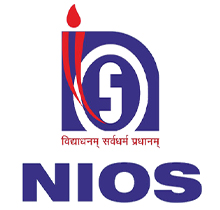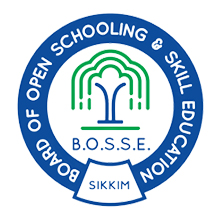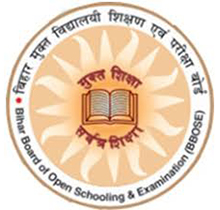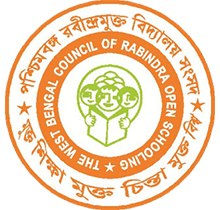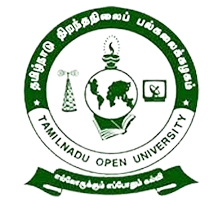10th Distance Education
10th distance education: Info, Eligibility, Fees, Admission & Top 5 Open Schools
 DURATION :
DURATION :
1 Year
 FEES :
FEES :
10000 – 24000 INR Per Year
 ELIGIBILTY :
ELIGIBILTY :
Age of 14 years minimum with ability to read, write. And required documents.
 BOARDS :
BOARDS :
5+ Boards Offer 10th Distance Education
Get In Touch
About 10th Distance Education
The 10th standard in India, often referred to as "Class 10" or "Matriculation," is a crucial milestone in a student's educational journey. Beside academic importance, there is also a key benefit of developing skills which can be practical skills or co-curricular activities.
Employers and institutions often place great importance on the 10th standard because it represents a fundamental level of education and a critical turning point in a student's life. It's at this stage that students acquire essential knowledge and skills, setting the stage for more specialised and advanced learning in the future.
In India, there are several education boards that provide 10th standard education. The two primary ones are the Central Board of Secondary Education (CBSE) and various State boards. Each board offers its own curriculum and conducts examinations, and students can choose the board that aligns with their educational goals.
Interestingly, the 10th standard goes by different names in various Indian states. In some states, it's known as "10th matriculation," while in others, it's referred to as "PUC" (Pre-University Course) or "SSC" (Secondary School Certificate). Although the names may vary from one state to another, the curriculum and importance of the 10th standard remain the same across the country.
Over and above that, the 10th standard isn't limited to traditional classroom settings. There are also options available to be done in distance mode, and these platforms are called open schooling. This approach provides students with an alternative path to complete their Secondary (10th) and Senior Secondary (12th) courses, which are equivalent to those offered in conventional schools. This alternative approach makes use of e-books, online learning resources as study materials, allowing students to learn through them. This flexibility is especially beneficial for individuals who might have discontinued their education earlier, homemakers looking to re-enter the academic realm, or those with various reasons for pursuing alternative education paths.
In contrast to traditional schooling, where students are required to complete their formal education from 1st to 9th grade, open schooling does not impose this requirement. In 10th-grade distance education, you don't necessarily need to have completed formal education from 1st to 9th grade. This flexibility is beneficial for various individuals, including homemakers and others. Unlike traditional schooling, distance education allows people who might not have followed the typical school path or have gaps in their education to still pursue and complete their 10th-grade studies. This is particularly helpful for those who may have taken a break from formal education and want to resume their studies. It opens up opportunities for a diverse range of individuals to continue their education and acquire important qualifications.
As we know these open schooling platforms provide students with the opportunity to pursue the secondary program through distance education. And these platforms are governed and regulated by the central or state government. For availing this distance program, the government has established boards, which are either regulated at central or state level. For example, NIOS is a central government board and BOSSE is a state government board for open schooling, their primary purpose is to cater to the needs of students who choose the distance or open schooling mode.These boards are commonly referred to as open school boards.
Is 10th distance education valid?
The validity of 10th distance education, like any educational program, depends on the accreditation and recognition of the institution offering the program.
So, yes! 10th-grade distance education offered by either Central or State government are considered just as valid as 10th offered by traditional schooling.
Accredited distance education institutions adhere to strict standards, guaranteeing that the education they provide is of an equally high quality as that offered by traditional schools.
Therefore, having a 10th certificate from open schooling boards which are from recognized boards can open up numerous opportunities in terms of education and employment in both the private and public sector. This certificate is widely accepted and considered valid.
You can make sure if these boards are valid by checking with the Council of Boards of School Education (COBSE). They keep a list of the boards that are valid in the country. To see this list for India, visit COBSE's website at https://www.cobse.in/new/.
So, with this we can understand that:
- 10th distance education certificates hold universal validity in educational institutions.
- Private companies regard 10th distance education certificates as valid proof of skills and determination.
- Both central and state government sectors validate and support 10th distance education certificates.
Why 10th Distance Education?
This mode of learning appeals to a wide range of individuals who have unique motivations, circumstances, and goals. Whether you are a student seeking flexible learning options, someone in pursuit of job opportunities, or an adult aiming to enhance your qualifications, 10th distance education provides a pathway that caters to diverse needs and aspirations.
Let's explore the benefits that people gain from this flexible and easy-to-reach way of learning.
- Continuing Education A 10th-grade certificate can serve as a stepping stone for further educational pursuits. It may be a requirement for enrolling in specific vocational training programs and high school equivalency programs.
- High School Equivalency If you didn't complete your traditional high school education, a 10th-grade certificate can serve as a bridge. It grants you access to high school equivalency programs, which are considered equivalent to a high school diploma or 12th, opening doors to various opportunities.
- Homemakers For individuals who may have paused their education to focus on homemaking responsibilities, a 10th certificate provides an opportunity to re-enter the educational and job market. It can be a valuable asset in seeking employment or pursuing higher education when ready.
- Accessibility for Remote Learners 10th distance education offers remote students the flexibility to access high-quality education from anywhere, allowing them to adapt their studies to their unique circumstances and
- Cost Saving Distance learning reduces expenses related to commuting, textbooks, and on-campus facilities, making it a cost-effective option for individuals pursuing a 10th certificate.
- Working Professionals Distance education accommodates the busy schedules of working individuals, enabling them to pursue their 10th certificate while managing their work commitments.
- Health Impaired Individuals For those with health concerns or disabilities who want to pursue 10th, for them 10th distance education provides an accessible and inclusive approach to education without compromising their well-being.
- Balance for Aspiring Athletes or Other Enthusiasts Aspiring athletes and individuals passionate about other interests can find a balance between their pursuits and education due to the adaptable nature of 10th-grade distance learning.
- Students from abroad Individuals living abroad can pursue 10th distance education to obtain Indian board certification, allowing them to continue their education and gain qualifications, irrespective of their global location.
- Nurturing Gifted Talents Exceptionally talented students who have limited time to dedicate to their education and aim to complete their 10th studies can utilise 10th distance education to achieve their goals while nurturing their talents.
- Individualised Learning for Juvenile Students Juvenile students interested in pursuing 10th-grade education can do so through 10th-grade distance education, which offers a supportive and customised learning environment to cater to their specific needs.
Challenges in 10-distance education
Distance education has become a popular mode of learning in recent years. However, it also comes with its own set of challenges. Here are some of the challenges faced in 10th distance education:
- Poor time management : One of the biggest challenges of distance learning is managing time effectively. Students need to be self-disciplined and motivated to complete their coursework on time.
- Communication Gaps : Distance learning can be isolating, and students may feel disconnected from their peers and instructors. Lack of instant communication can lead to misunderstandings and delays in getting help.
- Technical issues : Distance learning requires a reliable internet connection and access to a computer or other digital device. Technical issues such as slow internet speed, computer crashes, and software glitches can disrupt learning.
- Lack of motivation and engagement : Students may feel less motivated and engaged in distance learning than in traditional classroom settings. They may miss the social interaction and hands-on learning experiences that come with in-person classes.
- Difficulty in adapting to new learning styles : Students who are used to traditional classroom settings may find it challenging to adapt to new learning styles. They may struggle with online platforms and require extra guidance to reach fluent communication through different modalities such as text, verbal, facial expression, social media, etc.
- Lack of support : Distance learners may feel isolated and unsupported, especially if they are struggling with coursework. They may need additional support from instructors, peers, or tutors to succeed.
- Limited availability of study materials : Students may face difficulties in accessing study materials, especially if they do not have sufficient knowledge and skills like MS Word, MS Excel, and PowerPoint.
How to overcome the challenges?
To overcome these obstacles and thrive in a remote learning environment, it's essential to have a strategic approach. Here, we outline practical strategies to conquer the hurdles commonly encountered in distance education:
- Time Management : Create a study schedule and set clear goals. Use digital tools like calendars and task lists for organisation. Take regular breaks and establish specific study hours for better productivity.
- Communication : Actively engage in online forums, discussion boards, and virtual study groups to stay connected and clarify doubts promptly. Keep open communication channels with instructors and peers.
- Technical Issues : Be prepared with a backup plan for technical problems, including a secondary device and reliable internet. Regularly update software, troubleshoot common issues, and seek technical support from the institution to minimise disruptions.
- Motivation and Engagement : Set personal goals, maintain a dedicated study environment, and participate in interactive online activities. Explore webinars, online clubs, or subject-related virtual events to boost engagement and a sense of community.
- Adapting to New Learning Styles : Seek tutorials and training resources provided by your institution to become proficient with online platforms. Engage in peer-to-peer support to exchange tips and strategies for successful online learning.
- Seeking Support : Don't hesitate to seek help when facing challenges. Contact instructors or academic advisors for guidance. Consider peer tutoring or study groups for additional support and motivation.
- Access to Study Material : Learn basic digital literacy skills, including using software like MS Word, MS Excel, and PowerPoint. Explore open educational resources and digital libraries for free study materials.
To overcome these challenges, students need to be self-disciplined, motivated, and organised. They should also seek help from instructors, peers, or tutors when needed. Additionally, schools and universities can provide technical support, online resources, and other forms of assistance to help students succeed in distance learning.
Eligibility for 10th Distance education
The students must meet certain criterias to be eligible for getting admitted in the 10th distance education program. The conditions of eligibility for 10th distance education varies from different open schooling boards or institutions. Here are some eligibility criteria based on the following terms:
- Age limitation : Students must have completed a minimum age of 14 years by or on March 31st of the year in which they seek admission to the secondary program.
- Educational Qualification : The student applying for the secondary program shall be literal i.e. who can read and write. Students who have completed their formal schooling and those who have not but have the self certificate stating that they have studied can apply for the program.
- Documentary proof : The required documents of the candidate must be provided to the open schooling board or institution.
To understand and know the eligibility criteria of the specific institution or board, one can visit the official website of the particular institution or board.
Fees for 10th Distance Education
The fee structure for the secondary program varies from open schooling boards or institutions to institutions. Here we’ll go with few open schooling boards fee structures:
NIOS
| Category | 10th | 12th |
|---|---|---|
| General category male | 1800 | 2000 |
| General category female | 1450 | 1650 |
| C/ST, Ex-Service Men/Handicapped | 1200 | 1300 |
| The above mentioned fees are for 5 subjects | 720 | 720 |
BOSSE
| Fee Type | Secondary Course |
|---|---|
| Registration Fees | Rs. 1000/- (For Five years) |
| Programme Fees (For 5 Subjects) | Rs. 6000/- |
| For each additional subject | Rs. 1200/- |
| Practical Fee per Subject | Rs. 300/- |
| Examination Fee (Per Subject) | Rs. 500/- |
| Additional Fees for Practical Exam | Rs. 180/- per subject |
| Credit Subject Fees (TOC) | Rs. 1000/- per subject |
| Part Admission Fees | Rs. 2000/- per subject |
The above mentioned are just a few examples of the central and state level open schooling boards, there many more boards in India providing the secondary program to the students. Candidates must visit the official website or the office of the desired open schooling board or institution. It shall also be noted that the fees of the program changes with time.
Examination block and duration
Examinations for secondary programs are organised in distinct blocks, but the specific scheduling of these blocks can vary from one educational board or institution to another.
For instance, institutions such as NIOS offer four different streams, including two exam blocks in April-May and October-November, options for transferring credits, and the flexibility of on-demand examinations. In contrast, BOSSE conducts exams in two separate blocks in April and October.
The registration dates for these exams are typically updated by the respective institutions in advance of the examination periods. This approach provides students with the flexibility to learn and prepare for their exams at their own pace and in the comfort of their chosen schedule.
Syllabus for 10th Distance Education
The syllabus of the secondary program can vary from institution to institution. Different institutions have their own curriculum, such as NIOS has its own curriculum. Here is the general outline of the secondary program syllabus.
- Core subjects : Mathematics, Science, Social science, English and Regional language
- Additional subject : Depending on the board program designed by the board, students may get an option to choose an additional subject which can be chosen on their interest and career goals
- Practical subjects : There are certain subjects which are practically based especially in the science stream. These subjects include Physics, Chemistry, Biology.
- Vocational Subjects : These programs also offer vocational subjects that aim to provide knowledge regarding certain skills in industries.
Students can freely select subjects from the provided syllabus. They can choose any subjects of their interest or opt for particular kinds of subjects as per the syllabus, but considering their future academic and career goals is important. Choosing core subjects is wise because many higher education institutes demand them for admission. It ensures a seamless transition if students later opt for traditional education.
Admission process
Admission process for the secondary program is different in every institution. Here is the general procedure for admission:
- While heading for the admission process, the candidate first must select the board or the institution they want to get admitted in.
- Students shall visit the official website or the office or study centre of the board or the institution to get the admission form.
- Students shall read the admission form and fill the form with accuracy.
- Required documents shall be attached to the admission form.
- Submit the form along with the documents
- Institution will review the form for checking the eligibility criteria of the candidate
- Later student shall pay the prescribed fees
- Institution will give a confirmation of admission which may include the admission letter or enrollment number.
Documents required
Students shall complete the compliance of the documentation with the institution to proceed with the admission process
Following are the list of the documents required for secondary program
- Passport-size photo of the student
- Identity proof ( Adhaar Card )
Marksheet or transfer certificate if available.
FAQs
After the 10th, you have to take any stream or subjects in your class 11th. Before selecting eleventh-grade subjects, analyze the IAS Exam syllabus and its criteria. After Intermediate (class 12th), you have to complete your graduation (Any stream) from any recognized University/College/Institute in India.
No, you generally cannot join IIT after completing the 10th grade. Admission to IITs typically requires completing the 12th grade or equivalent.
The difficulty level of NIOS compared to CBSE can vary depending on individual learning preferences and experiences. It's not hard or easy, as it can differ for each student.
The right choice between science, commerce, or arts after the 10th depends on what you enjoy, your future career aspirations, and your strengths
Yes, you can switch from regular school to open school for 10th grade. However, the procedures and requirements may vary depending on the open school's rules. It's a good idea to contact the open school directly to get information about transferring and the documents you need.
Yes, a 10th open schooling certificate is generally equivalent to a regular school certificate and holds recognition for various educational and employment purposes.
Yes, you can appear for competitive exams or entrance tests after completing 10th grade through open schooling, provided you meet the specific eligibility criteria of the exam or institution.
To verify the validity of a 10th open schooling board, you can check with relevant education authorities or the respective board's official website for accreditation and recognition information.
Yes, 10th open schooling programs provide specific study materials like textbooks, e-books, audio-visual resources, practice papers, and online learning platforms, offering a diverse range of materials to support distance education.
Yes, you can typically apply for government and competitive exams with a 10th open schooling certificate, provided you meet the specific eligibility criteria of the exam.
The admission fee for 10th open schooling varies depending on the open schooling board or institution. It is recommended to check the specific board's official website.

